Initially, LED therapy was used exclusively for the needs of science. The applying of lamps was intended to grow plants in space, but then it was discovered that a certain wavelength promotes better tissue regeneration and can be useful in healing wounds. Over time, LED therapy has spread to cosmetology and is now actively used to treat skin diseases and fight wrinkles.
In this article, we explore green light therapy, its benefits, the range of potential uses, and side effects and contraindications based on scientific research.
What is green light therapy and how does it work?
What is green light therapy?
LED green light therapy is a painless, relaxing procedure that has many benefits.
With a wavelength of 510-560 nm, green light is absorbed by the skin (up to 2 mm) and has a soothing effect. Helps to lighten hyperpigmentation spots for a brighter complexion. The soothing effect also has anti-inflammatory properties. Green LED Therapy is used to treat dilated capillaries, loose skin around the eyes, under-eye circles, hyperpigmentation, and sunspots.
Also, more recently, studies published over the past few years have shown that green light has some amazing properties — it does not aggravate migraine headaches, and potentially reduces photophobia (increased sensitivity to light) in people suffering from migraines.
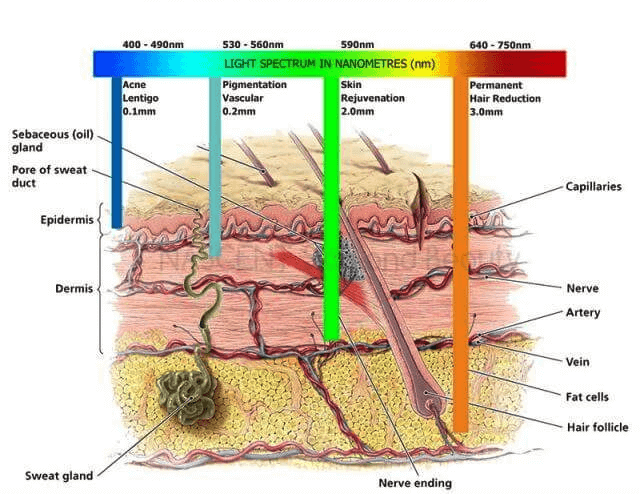
How does it work
The task of light therapy, or LED light therapy, is to achieve qualitative changes in the skin at the cellular level through exposure to light waves of different lengths. Unlike ultraviolet rays, LEDs do not heat the skin and do not cause photoaging — this procedure is safe and suitable for any skin type, even the most photosensitive.
The procedure is recommended to be applied from 30 minutes to an hour twice a week if there are no contraindications on the part of the attending doctor. Depending on the type of disease in the course of treatment, it is necessary to regulate the time and number of sessions.
Today, green light therapy has a wide range of potential applications based on research on its potential contribution to pain relief, in particular migraines, wound healing, and skin improvement.

Green light therapy devices
Green light therapy devices are safe and effective treatments for a range of conditions, including pain, allergies, fatigue, and age-related changes. Below are the best products that will surprise you with their efficiency.

Green LED Face Mask
– Improves metabolism, stimulates collagen production, which ultimately reduces age-related changes;
– Suitable for all skin types;
– Constructed 150 non-heat LED bulbs for safe use.
Allay Light Therapy Lamp
– 200 RGB LED bulbs emitting the most optimal wavelengths for a variety of skin conditions;
– Has 4 modes for complete skincare;
– The double folding function saves storage space.
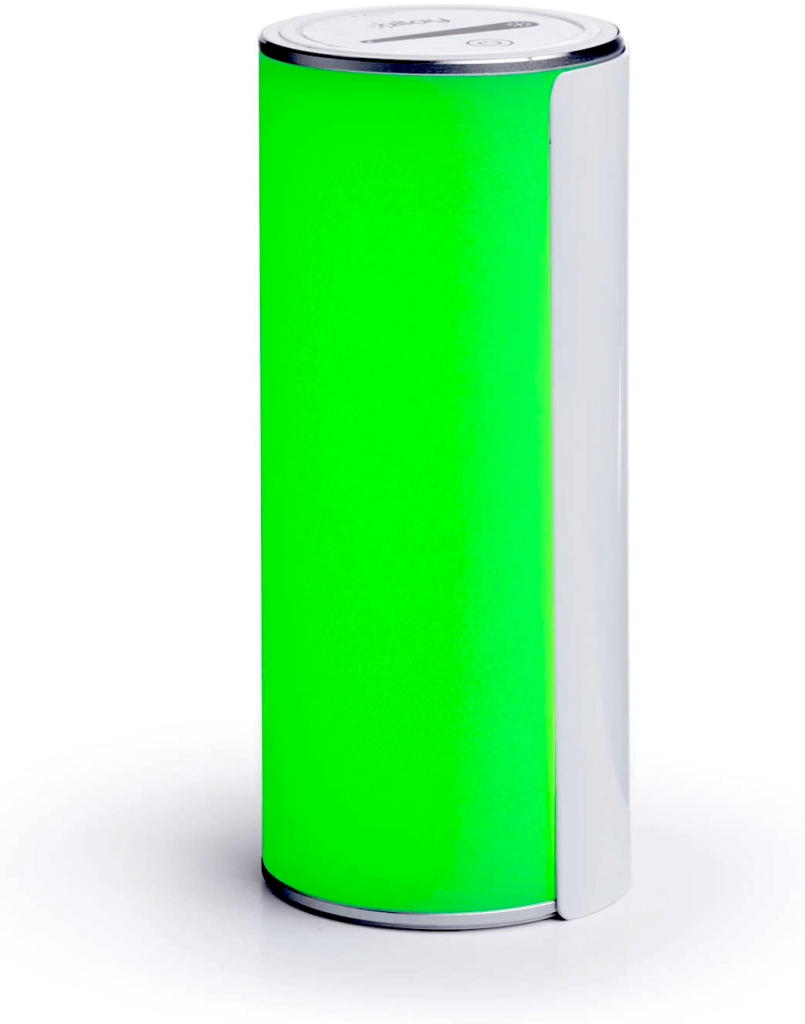

Bestqool LED Photon Light Therapy
– 200 RGB LED bulbs emitting the most optimal wavelengths for a variety of skin conditions;
– Has 4 modes for complete skincare;
– The double folding function saves storage space.
Green LED Face Mask for Anti-Aging

LED Face Mask is a cover that sticks to your face using self-adhesive backing. By emitting green light, the mask helps in the fight against pigmentation and premature aging of the skin. The mask is made of flexible plastic and because it is self-adhesive, there’s no need for glue or adhesive tape to keep it in place.
The mask is powered by 3 AAA batteries which are contained within the sticker backing itself, thus allowing for easy replacement if needed.
It is recommended to use the mask for 15-20 minutes in one session, 4 days a week. Already after the first procedure, users notice the smoothness of the skin. And after two months — reduction of wrinkles and improvement of the general tone of the face.
Allay Light Therapy Lamp for Pain Relief

Allay Light Therapy Lamp is a device that uses LED light to heal migraines and promote well-being. The lamp uses a green diode, which, unlike red and blue, has a calming effect on the human body, thereby reducing headaches.
A feature of Allay Light Therapy is a built-in timer that turns off automatically at the end of one session (20 minutes) to avoid overexposure. Also, the device has two intensity settings that control the amount of light emitted by the Allay lamp.The manufacturer claims that using as little as 20 minutes a day can improve your mood, sleep patterns, and even your energy levels. Also, users note that after two to three procedures, the intensity of pain decreased to insignificant.
Bestqool LED Photon Light Therapy for Anti-Aging

Bestqool LED Photon Light Therapy is a cutting-edge line of beauty products. It uses various LEDs, including green to deliver safe, therapeutic light energy deep into skin tissue, which tightens the pores and rejuvenates the skin.
It has 4 modes and features 200 ultra-efficient LED bulbs that provide the light you need to treat a variety of skin problems.
It is recommended to use it for 20 minutes a day, 3-4 times a week. The first noticeable results will be visible after one and a half to two months, depending on the skin type.
Green light therapy for skin
Age-related changes and freckles
Aging of the skin is one of the urgent problems of modern cosmetology and dermatology. Many factors play a role in the development of skin aging processes: hereditary predisposition, age, lifestyle, nutrition, concomitant diseases, environmental factors. As a result, wrinkles are formed, the roughness of the skin increases, and hyperpigmentation.
In modern cosmetology, many procedures can reduce wrinkles, age spots, and freckles. Green light therapy is considered one of the most effective treatments for hyperpigmentation.
Treatment of hyperpigmentation with green light therapy allows you to selectively remove accumulations of melanin while avoiding thermal and mechanical damage to the surrounding tissue. The energy of light penetrates to a certain depth, deliberately destroying only the cells containing the melanin pigment. This will not damage other tissues. Melanin comes to the surface and gradually peels off along with the surface layer of the epidermis.

This treatment method has been confirmed by a large number of studies, some of which are listed below.
A study [1], which involving of 100 patients with pigmentation (freckles) and age-related changes (wrinkles, skin tightness) were treated with 532 nm green light and 1064 nm long-pulse laser. After 3-6 treatments, 50 patients receiving 532 nm green light therapy showed an improvement in pigmentation by 70-80%, skin tightening by 30-50%, skin texture by 30-40%. and 20% to 30% in wrinkles. Another 50 patients who received the 1064 nm laser showed much worse results: improvement of redness from 10% to 20%, pigmentation from 0% to 10%, skin tightening from 10% to 30%, improvement of skin condition by 20-30%, skin texture and 10% to 30% wrinkles.
The research results are shown below.

Source: US National Library of Medicine, National Institutes of Health
A study [2], which involved 20 patients (14 with freckles and 6 with lentigo — brown or light brown spots that form in the face and hands) were subjected to green light therapy (532 nm). The results showed that 16 (80%) of 20 patients (10 patients with freckles and 6 with lentigo) showed an improvement of more than 50%. They were irradiated three to eight times with an interval of 4–12 weeks.

Source: US National Library of Medicine, National Institutes of Health
From this, it can be concluded that green light therapy can safely and effectively treat freckles and lentigo.
Erythema and rosacea
Rosacea is a common dermatological disease with chronic and anxious development, characterized by redness, persistent erythema associated with telangiectasia. Erythema is the most difficult rosacea symptom to treat. It often affects fair-skinned men and women and can have serious psycho-emotional consequences.
Many innovative studies are exploring new therapies trying to figure out a reliable and durable way to safely control rosacea without reoccurring relapse. Unlike other treatments, which require daily intake or long-term use, the advantage of light therapy is the limited number of sessions to achieve improvement.
A study [3] involving 20 women with telangiectasia was treated with green light therapy (532 nm). Treatments were performed 12 weeks apart. The results noted that 81% of participants experienced moderate to very significant improvement in 24 weeks. In addition, all patients tolerated the treatment very well, no side effects were observed.
A voluminous study was conducted [4], with the participation of 647 patients who noted superficial vascular lesions, which are a sign of rosacea. The treatment was performed using light therapy (532 nm). As a result, 77.6% of patients, after 6 weeks, noted the effectiveness of the treatment — the skin was noticeably cleared and the condition of the skin improved. Only 5.8% of patients experienced side effects, all of which were minor; the main side effect was edema.

Source: US National Library of Medicine, National Institutes of Health
The aim of the next study [5] was to determine the effectiveness of the LED (green light 532 nm) in the treatment of superficial cutaneous vascular lesions, erythema, which is a symptom of rosacea. 49 patients were exposed to radiation for 2 years at intervals of 6 weeks. As a result, in 44 out of 49 (90%) patients, the condition improved markedly and vascular lesions disappeared. Some patients experienced side effects: two refused further treatment due to pain.

Source: US National Library of Medicine, National Institutes of Health
From this, we can say that green light therapy is a safe and effective treatment for rosacea and its symptoms — superficial vascular lesions and erythema.
Green light therapy for pain relief
Chronic pain
More than 100 million patients in the United States suffer from chronic pain. On average, $261–300 billion is spent annually on pain relief and $297–336 billion is lost due to unproductive work [6].
In addition, the emotional state associated with chronic pain has led to life-changing events ranging from the destruction of family unity [7] to suicide attempts [8]. Treatment options for acute, postoperative pain and chronic pain are limited, and many drugs are ineffective and often have serious side effects.
Green light therapy has proven to be an effective, non-invasive treatment that has fewer side effects. The studies presented below support this claim.
A study [9] was conducted in which 21 patients with fibromyalgia took part. The pain in this disease and its impact on the quality of life cannot be effectively treated with the help of modern therapeutic agents. Coming out of this, the decision was made to prescribe GLED (Green LED Therapy) as a potentially effective treatment. The procedures took place within 1-2 hours daily for 10 weeks. As a result, patients reported significant reductions in mean pain intensity. Also, GLED therapy didn’t cause any side effects in these patients.
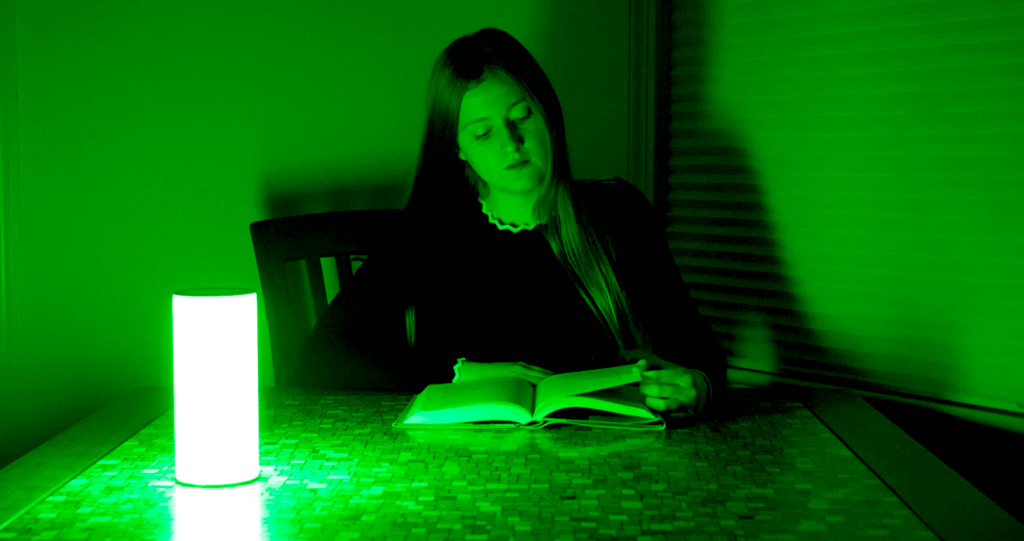
Migraine
According to the American Migraine Foundation [10], migraine affects about 36 million adults in the United States. In addition to headaches and nausea, migraines can cause vomiting, blurred or impaired vision, and sensitivity to light and sound.
Many migraine sufferers will tell you that bright lights can cause a terrible headache. More than 80 percent of migraine attacks are associated with and worsened by photosensitivity, leading many migraine sufferers to seek comfort in the dark and isolate themselves from work, family, and daily activities.
But researchers have found that a narrow band of green light can significantly reduce photosensitivity — known as photophobia — and reduce the severity of headaches in migraine sufferers.
A study [11] was involving 43 patients with acute migraine attacks were reporting changes in headache when exposed to different intensities of blue, green, yellow, and red light.
As the light intensity increased every 30 seconds, patients were asked if their headaches worsened. Nearly 80 percent (34 patients) said their migraines were worse when exposed to white, blue, or yellow light, while green light reduced pain in 20 percent of patients.
The researchers then measured the number of electrical signals generated by the retina (in the eye) and cortex (in the brain) of the patients in response to each color of light. They found that blue and red light generate the largest signals in both the retina and the cerebral cortex, while green light generates the smallest signals.
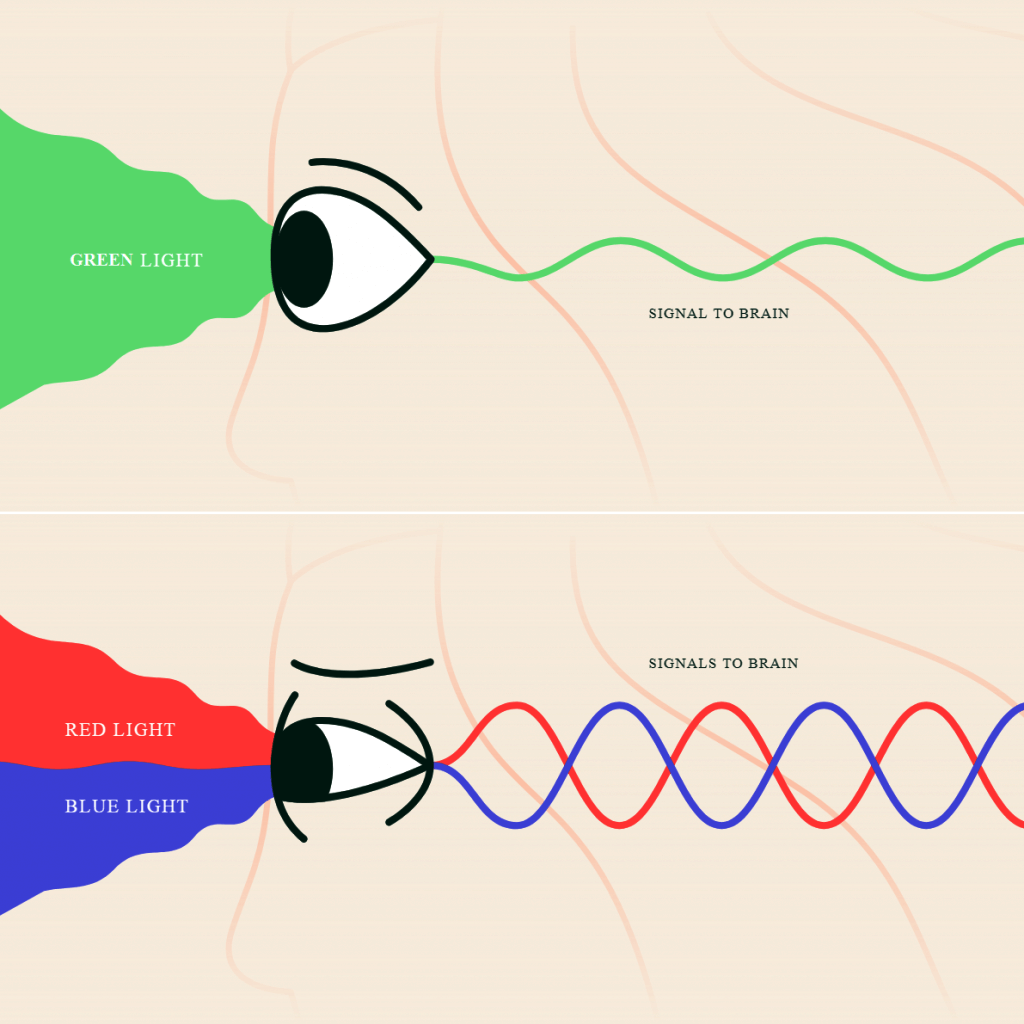
Study [12], which involved 29 patients, of whom 7 had episodic migraine, and 22 — chronic migraines. The following treatment was used, consisting of exposure for 1-2 hours daily with white LEDs for 10 weeks with a 2-week break followed by exposure to green light under the same conditions. As a result, 29 patients noted that white LEDs did not significantly change the number of days with headaches. Green LEDs resulted in a significant reduction in the number of days with headaches from 8 to 2 days and 22 to 9 days in patients with episodic and chronic migraines, respectively.
In addition to reducing pain, patients also reported improvements in mood and sleep, as well as an improvement in their ability to work, exercise, and do housework. 11 patients said they also reduced their use of pain relievers, including opioids, amid green light.
Since no side effects have been reported, green LEDs may provide a treatment option for those patients who prefer non-drug treatments or may be considered as an adjunct to other treatment strategies.
Green light therapy for wound healing
There are many methods to promote wound healing, including light therapy, which consists of light beams that help the human body to heal and sterilize wounds and regenerate cells.
A study [13] was conducted that examined the effect of red (638 nm), blue (456 nm), and green (518 nm) LEDs on wound healing. In a study, the size of skin wounds in mice was significantly reduced 7 days after exposure to green LEDs, and complete healing was accelerated by red and green LEDs.
To better understand the mechanism of wound healing with LED therapy, the effect of LEDs on human wounds was investigated [13]. The results show that some are significantly increased under the influence of green LEDs.
From this, we can conclude that green LEDs promote wound healing, causing accelerated skin regeneration. This suggests that red LEDs and green could be a powerful new therapeutic strategy for wound healing.

Side effects and risks caused by green light therapy
LED Green Therapy is not only effective but also provides the added benefit of painlessness and relaxation without requiring recovery time. The LED can also be applied to all skin types, regardless of ethnicity.
As for the side effects, depending on the intensity of the device that emits light, some people may experience varying degrees of retinal damage, which can decrease visual acuity.
The best eye protection is tinted glasses, which mostly block out light. These goggles may look more like a large shield that covers the area around the eyes and blocks the penetration of potentially harmful rays.
In addition, they provide more than enough dimming so that the brightness of the green LED does not cause interference, discomfort, or any damage.
Contraindications for light therapy include:
Also, if you are currently taking steroids or cortisone injections, you should not receive light therapy.
Before the procedure, be sure to clarify all important details to exclude possible side effects.
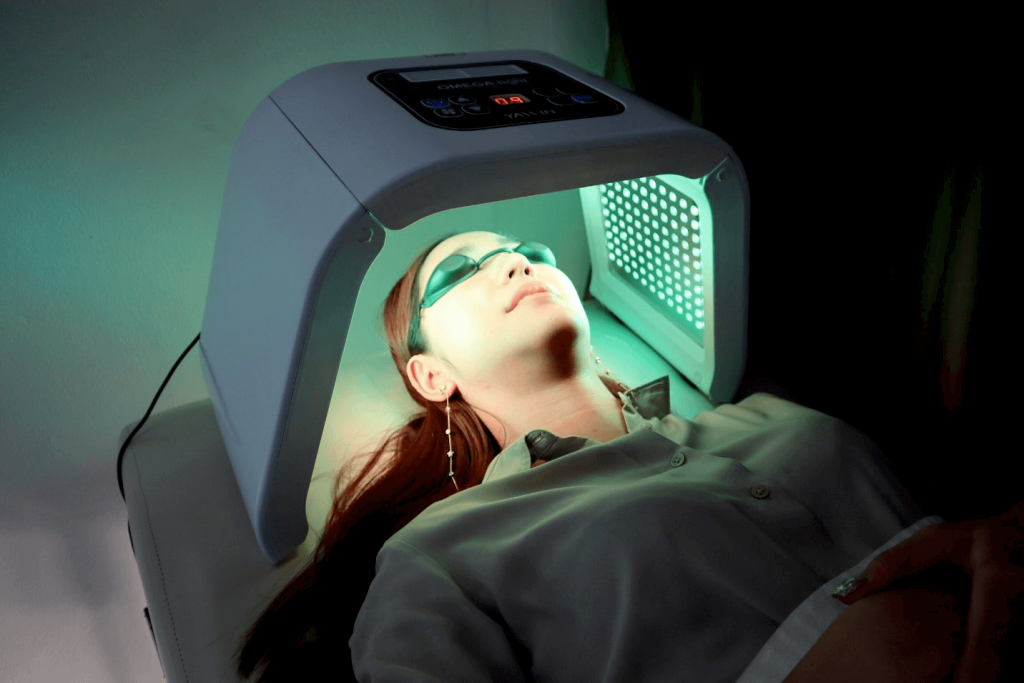
The verdict
Green light therapy is gaining more and more attention for many reasons:
- It is non-invasive because the patient does not need to undergo surgery or take any medication.
- The patient can control when and how he uses it, without even leaving home.
- It’s relatively inexpensive.
- In addition, from the point of view of the doctor, there is a big positive point in that green light therapy has a low risk of side effects.
- And finally, therapy can be performed at any time of the year, before or after sun exposure.
FAQ
🟢 Why is green light therapy useful?
LED therapy can be used for several conditions. Green light is used to reduce hyperpigmentation, treat dilated capillaries, loose skin around the eyes, and conditions such as rosacea and erythema. This light also has an analgesic effect on chronic pain (e.g. fibromyalgia) as well as migraines.
✔ What are the benefits of green light?
It is a non-invasive procedure that does not cause any side effects. It can also be applied at any time of the year, before or after sun exposure, which makes it even more comfortable for patients.
💁♀️ Does green light treat migraine headaches?
Yes. In support of this, it has been confirmed that green light aggravates migraines significantly less than all other colors of light and that at low intensities, green light can even reduce headaches.
🥽 Is green LED light harmful to your eyes?
Exposure to intense and powerful (LED) light is phototoxic and can lead to loss of retinal cells and decreased visual acuity. Therefore, during the procedure, we strongly recommend that you cover your eyes with special protective glasses.
Sources
- Lee M.W. Combination 532-nm and 1064-nm lasers for noninvasive skin rejuvenation and toning. — Arch Dermatol. 2004 May;140(5):625.
- T. Rashid, I. Hussain, M. Haider & T. S. Haroon. Laser therapy of freckles and lentigines with quasicontinuous, frequency-doubled, Nd: YAG (532 nm) laser in Fitzpatrick skin type IV: a 24-month follow-up. – Journal of Cosmetic and Laser Therapy, 4:3, 81-85, DOI: 10.1080/147641702321136246.
- E. Bernstein. Treatment of spider veins of the lower extremity with a novel 532 nm KTP laser. – University of Pennsylvania, Ardmore, PA
- G. L. Becher, H. Cameron, H. Moseley. Treatment of superficial vascular lesions with the KTP 532-nm laser: experience with 647 patients. – Lasers Med Sci. 2014 Jan;29(1):267-71. DOI: 10.1007/s10103-013-1330-5. E-pub 2013 Apr 30.
- C. Clark, H. Cameron, H. Moseley, J. Ferguson, S. H. Ibbotson. Treatment of superficial cutaneous vascular lesions: experience with the KTP 532 nm laser. – Lasers Med Sci. 2004;19(1):1-5. DOI: 10.1007/s10103-004-0294-x. E-pub 2004 Apr 14.
- Institute of Medicine (U.S.). Committee on Advancing Pain Research Care and Education. Relieving pain in America: a blueprint for transforming prevention, care, education, and research. Washington, D.C.: National Academies Press; 2011.
- Smith AA, Friedemann ML. Perceived family dynamics of persons with chronic pain. Journal of advanced nursing. 1999;30(3):543–551.
- Gray D, Coon H, McGlade E, Callor W.B, Byrd J, Viskochil J, Bakian A, Yurgelun-Todd D, Grey T, McMahon WM. Comparative analysis of suicide, accidental, and undetermined cause of death classification. Suicide & life-threatening behavior. 2014;44(3):304–316.
- Laurent Martin, Frank Porreca, Elizabeth I Mata, Michelle Salloum, Vasudha Goel, Pooja Gunnala. Green Light Exposure Improves Pain and Quality of Life in Fibromyalgia Patients: A Preliminary One-Way Crossover Clinical Trial. – Pain Med. 2021 Feb 4;22(1):118-130. DOI: 10.1093/pm/pnaa329.
- American Migraine Foundation/ Web-site
- Rodrigo Noseda, Carolyn A. Bernstein, Rony-Reuven Nir, Alice J. Lee, Anne B. Fulton, Suzanne M. Bertisch, Alexandra Hovaguimian. Migraine photophobia originating in cone-driven retinal pathways. – Brain, Volume 139, Issue 7, July 2016, Pages 1971–1986.
- Laurent F. Martin, Amol M. Patwardhan, Sejal V. Jain, Michelle M. Salloum, Julia Freeman, Rajesh Khanna, Pooja Gannala, Vasudha Goel. Evaluation of green light exposure on headache frequency and quality of life in migraine patients: A preliminary one-way cross-over clinical trial. – Cephalalgia. 2021 Feb;41(2):135-147. DOI: 10.1177/0333102420956711. E-pub 2020 Sep 9.
- Tomohiro Fushimi, Shigeki Inui, Takeshi Nakajima, Masahiro Ogasawara, Ko Hosokawa, Satoshi Itami. Green light-emitting diodes accelerate wound healing: characterization of the effect and its molecular basis in vitro and in vivo. – Wound Repair Regen. Mar-Apr 2012;20(2):226-35. DOI: 10.1111/j.1524-475X.2012.00771.x.
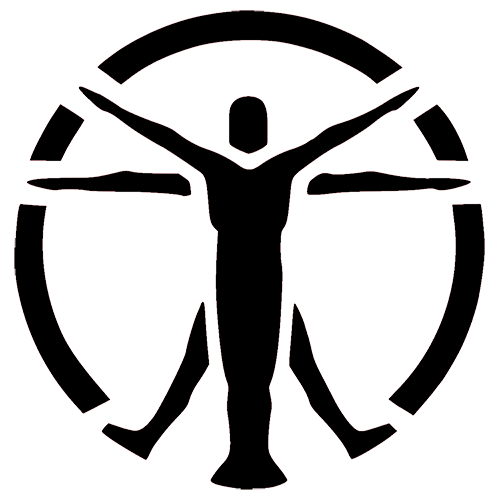
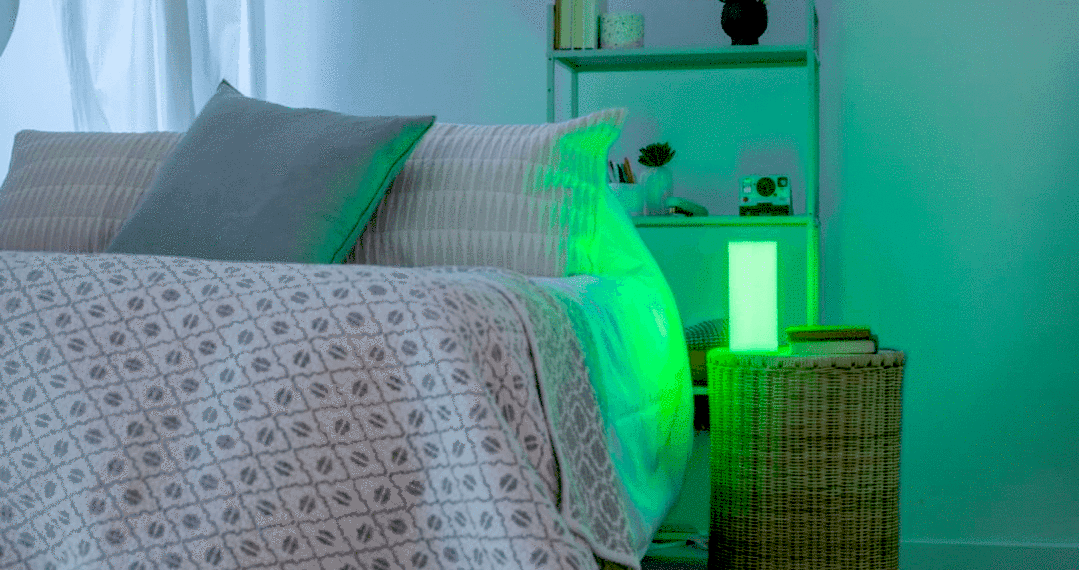
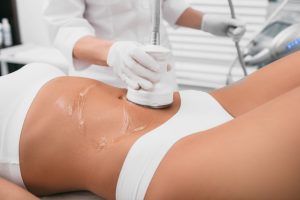

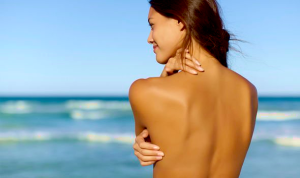

I have long tested the effectiveness of green light therapy. Always suffered from hyperpigmentation and after a few sessions saw a great result! Now my skin is perfectly clean!
How many procedures are needed to reduce facial wrinkles?
Are there any contraindications to green light therapy for allergies?